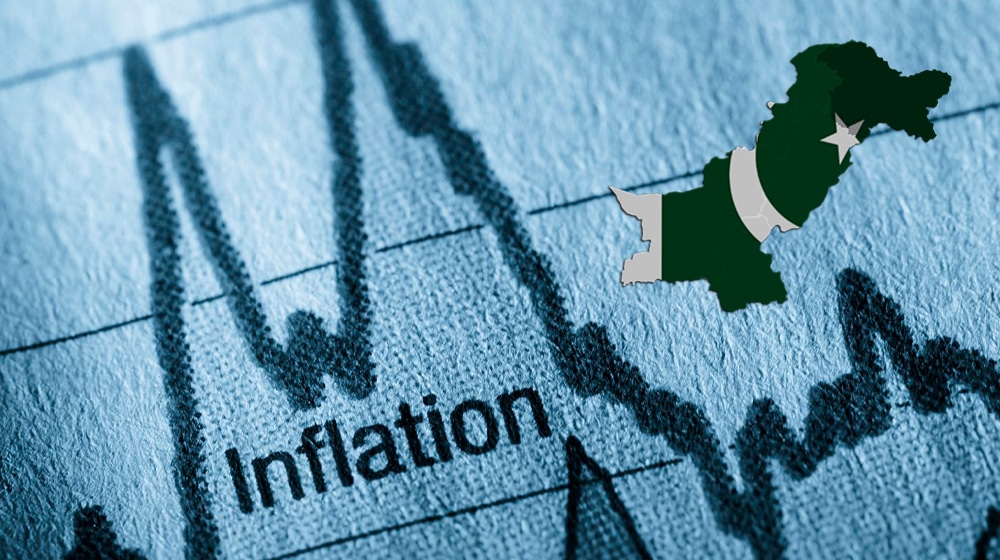High domestic inflation may impact domestic economic activities, this was stated by the Ministry of Finance in the Monthly Economic Update and Outlook report issued on Friday.
The report states that international developments and persistent high domestic inflation may impact domestic economic activities. Among the determining factors of current trends in both international and domestic inflation are supply chain issues and surging international commodity prices.
Under normal circumstances, these prices follow a cyclical pattern that implies that normally, price spikes are followed by a cooling-off period. But the current cycles of international food and oil prices are different.
First, the volatility in these markets is high compared to historical standards. Second, due to geopolitical tensions, the increasing trend in prices may remain intact.
High inflation and the accompanying monetary policy reaction may temporarily dampen the cyclical position of Pakistan’s economy thereby reducing growth prospects in the short run. But in the long run, Pakistan’s productive capacity will determine its growth as well as employment prospects. This requires a substantial upward shift in the propensity to invest and the productivity of investment expenditures.
Stimulating the propensity to invest implies that a larger share of the income that the country generates is used to finance Gross Fixed Capital Formation. Structural policies are to be further designed to attract more productive investments from foreign sources (Foreign Direct Investments) and from both private and public domestic investors.
High international commodity prices not only keep inflation elevated, they are also a burden on Pakistan’s external account and hence on its foreign exchange reserves. Many other countries are facing the consequences of high and volatile commodity prices, especially oil and gas prices. Strengthening of Pakistan’s overall supply side by increasing its productive potential would allow it to produce more exports and discourage imports.
These prospects would relax the external constraint that has historically weighed on Pakistan’s economy and which has caused regular Balance of payments crises and an accompanying stop-and-go profile in Pakistan’s economic growth path.
The report mentioned that economic activity in Pakistan’s main trading partners continues to remain slightly above the trend. Some slowdown has been observed due to geopolitical uncertainty and a surge in commodity prices. If these tensions continue, Pakistan’s growth may be affected as well.
It also stated that the production of the all-important Kharif crops in Pakistan is encouraging. Cotton production increased by 17.7 percent to 8.3 million bales while rice production increased by 10.7 percent to reach 9.3 million tons, sugarcane production grew by 9.6 percent to 88.8 million tons, and maize production went up by 8.6 percent to yield 9.7 million tons.
LSM grew by 7.8 percent between July and February of FY 2022 compared to 2.2 percent during the same period last year. Due to export-oriented policies, the exports of goods and services are expected to continue their upward trend through April. Imports are expected to remain at a level in line with domestic economic activity and international commodity prices.
Resultantly, the trade deficit is expected to remain around $3.0 billion in April. Remittances are expected to remain high compared to the previous months due to Eid. Accordingly, the current account will stay around $1.0 billion in April, and the Federal Board of Revenue (FBR) exceeded its revenue target by 5.8 percent in the first nine months of the current fiscal year. Despite a massive tax relief on various essential items for the common man, the FBR has been able to achieve a sizeable portion of its annual target.
Similarly, various policy and operational measures have been initiated to maximize revenue. There is potential through digitization, transparency, and taxpayer facilitation, and all these efforts have ensured the ease of doing business and have translated into healthy and steady revenue growth.
The report states that geopolitical tensions and persistent high domestic inflation may affect domestic economic activity.
High inflation accompanied by monetary policy reaction may temporarily reduce growth prospects in the short run, but economic growth and employment are determined by the path of Pakistan’s productive capacity in the long run. This requires more productive investments from both foreign and domestic sources.
The Russia-Ukraine war has been affecting the global economy through three channels. First, higher commodity prices are deteriorating real income. Second, their neighboring countries are grappling with disrupted trade and the refugee influx. Third, higher investors’ uncertainty is reducing business confidence. Consequently, these channels are driving international commodity prices up while having reduced global output growth by 0.8 percentage points in 2022.
Energy and non-energy prices both increased by 24.1 and 8.1 percent, respectively, in March. Among the key sub-groups, agriculture commodities jumped by 7.2 percent, fertilizers by 20.7 percent, metals and minerals by 7.7 percent, and precious metals by 5.3 percent. The fiscal deficit in July-March FY2022 was recorded at 4.0 percent of the GDP. The primary balance posted a deficit of Rs. 447.2 billion.
Money supply (M2) grew by 2.7 percent (Rs. 665.5 billion) between 1 July and 1 April FY2022 as compared to the growth of 6.7 percent (Rs. 1,439.5 billion) last year. During July-March FY 2022, the current account deficit was recorded at $13.2 billion.

























